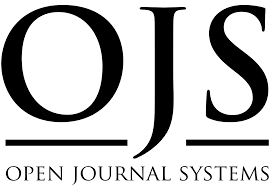Avaliação de potencial inseticida e ecotoxicologia preditiva do composto N-{(4′-[(E)-3-(4-fluorofenil)-1-(fenil)prop-2-en-1-ona]}acetamida
Resumo
As chalconas são moléculas orgânicas encontradas na natureza em diversas famílias de plantas e com relevância para o mercado químico-farmacológico. Não obstante, a molécula sintética N-{(4’-[(E)-3-3(4-fluorofenil)-1-(fenil)prop-2-em-1-ona]}acetamida (PAAPFBA) também contribui em tais preceito, pois apresenta em sua constituição, atividade ansiolítica e antioxidante. Dadas as potencialidades da PAAPFBA e seus atributos na contemporaneidade, o estudo tem por finalidade investigar em caráter in silico uma possível atividade inseticida e seus impactos sob as abelhas da espécie Apis melífera, visto que, os insumos agrícolas industriais utilizados ocasionam detrimento destes organismos, assim como, impactos à saúde humana. A metodologia foi baseada em métodos QSAR (Quantitative Structure-Activity Relationship) com ênfase nas plataformas InsectiPAD: Insecticide Physicochemical-properties Analysis Database© e BeeToxAI©. A partir da utilização desses métodos pode-se inferir que a chalcona PAAPFBA apresenta alto potencial inseticida e não ocasiona toxicidade aguda por via oral ou contato em abelhas do gênero Apis melífera o que pode contribuir para que novas moléculas desta classe de compostos possam ser introduzidas no mercado agroindustrial. Todavia, ainda se faz necessário a incorporação de diversos ensaios em diferentes compartimentos ambientais (água, sedimento e solo) para investigar seus possíveis impactos nestes locais buscando a efetividade, segurança e saúde ambiental.
Palavras-chave
Texto completo:
PDF (Português)Referências
Almeida Neto, F. W. D. Q. (2021). Theoretical, structural and in silico analysis of aminochalcones derivatives with potential antioxidant and anti-SARS-CoV-2. 152 f. Tese (Doutorado em Química) - Universidade Federal do Ceará, Fortaleza. Disponível em: < https://repositorio.ufc.br/handle/riufc/61340 >. Acesso em: Jun, 2022.
Almeida-Neto, F. W. Q. et al. (2020). Characterization of the structural, spectroscopic, nonlinear optical, electronic properties and antioxidant activity of the N-{4’-[(E)-3-(Fluorophenyl)-1-(phenyl)-prop-2-en-1-one]}-acetamide. Journal of Molecular Structure, 1220, 128765.
Alves, V. M. et al. (2016). Alarms about structural alerts. Green Chemistry, 18(16), 4348-4360.
Alves, V. M. et al. (2018). Development of web and mobile applications for chemical toxicity prediction. Journal of the Brazilian Chemical Society, 29, 982-988.
Avram, S et al. (2014). Quantitative estimation of pesticide-likeness for agrochemical discovery. Journal of cheminformatics, 6(1), 1-11.
Balsan, J. D. et al. (2019). Desenvolvimento de metodologia de revelação de impressão digital latente com chalconas. Química Nova, 42, 845-850.
Banks, J. E. et al. (2020). Lethal and sublethal effects of toxicants on bumble bee populations: a modelling approach. Ecotoxicology, 29(3), 237-245.
Bickerton, G. Richard et al. (2012). Quantifying the chemical beauty of drugs. Nature chemistry, 4(2), 90-98.
Cronin, M. T. D. An introduction to chemical grouping, categories and read-across to predict toxicity. Chemical Toxicity Prediction, 1-29.
Ferreira, M. K. A. et al. (2019). Anxiolytic-like effect of chalcone N-{(4′-[(E)-3-(4-fluorophenyl)-1-(phenyl) prop-2-en-1-one]} acetamide on adult zebrafish (Danio rerio): Involvement of the GABAergic system. Behavioural Brain Research, 374, 111871.
Ferreira, M. K. A. et al. (2018). Potencial farmacológico de chalconas: Uma breve revisão. Revista Virtual de Química, 10(5).
Jia, C. Y., Wang, F., Hao, G. F., & Yang, G. F. (2019). InsectiPAD: A web tool dedicated to exploring physicochemical properties and evaluating insecticide-likeness of small molecules. Journal of Chemical Information and Modeling, 59(2), 630-635.
Mei, L. C et al. (2022). Pesticide Informatics Platform (PIP): An International Platform for Pesticide Discovery, Residue, and Risk Evaluation. Journal of Agricultural and Food Chemistry.
Mohamad, A. S. et al. (2010). Antinociceptive activity of a synthetic chalcone, flavokawin B on chemical and thermal models of nociception in mice. European Journal of Pharmacology, 647(1-3), 103-109.
Moreira-Filho, J. T. et al. (2021). BeetoxAI: An artificial intelligence-based web app to assess acute toxicity of chemicals to honey bees. Artificial Intelligence in the Life Sciences, 1, 100013.
Myatt, G. J. et al. (2018). In silico toxicology protocols. Regulatory Toxicology and Pharmacology, 96, 1-17.
Naresh, P. et al. (2022). Larvicidal and histopathological efficacy of cinnamic acid analogues: A novel strategy to reduce the dengue vector competence. RSC advances, 12(16), 9793-9814.
Neves, B. J. et al. (2020). Deep Learning-driven research for drug discovery: Tackling Malaria. PLoS computational biology, 16(2), e1007025.
Özdemir, A et al. (2015). Synthesis and evaluation of new indole-based chalcones as potential antiinflammatory agents. European journal of medicinal chemistry, 89, 304-309.
Riniker, S.; Landrum, G. A. (2013). Similarity maps-a visualization strategy for molecular fingerprints and machine-learning methods. Journal of cheminformatics, 5(1), 1-7.
Singh, Narender et al. (2012). A physicochemical descriptor-based scoring scheme for effective and rapid filtering of kinase-like chemical space. Journal of cheminformatics, 4(1), 1-12.
Thorbek, P. et al. (2017). Colony impact of pesticide‐induced sublethal effects on honeybee workers: A simulation study using BEEHAVE. Environmental toxicology and chemistry, 36(3), 831-840.
USEPA Environmental Protection Agency, Guidance for assessing pesticides risks to bees, 2014. Disponível em: < https://www.epa.gov/pollinator-protection/pollinator-risk-assessment-guidance >. Acesso em: Jun, 2022.
Vanangamudi, G., Subramanian, M., & Thirunarayanan, G. (2017). Synthesis, spectral linearity, antimicrobial, antioxidant and insect antifeedant activities of some 2, 5-dimethyl-3-thienyl chalcones. Arabian Journal of Chemistry, 10, S1254-S1266.
Yusof, I.; Segall, M. D. (2013). Considering the impact drug-like properties have on the chance of success. Drug Discovery Today, 18(13-14), 659-666.
Zheng, M.; Andrade, C. H.; Bajorath, J. (2021). Introducing artificial intelligence in the life sciences. Artificial Intelligence in the Life Sciences, 1, 100001.
Apontamentos
- Não há apontamentos.
Direitos autorais 2022 Anthony Barbosa Belarmino, Damião Sampaio de Sousa, Francisco Rogênio da Silva Mendes, Márcia Machado Marinho, Hélcio Silva dos Santos, Emmanuel Silva Marinho
Revista Brasileira de Meio Ambiente (Rev. Bras. Meio Ambiente) | ISSN: 2595-4431
 Revista sob Licença Creative Commons
Revista sob Licença Creative Commons




